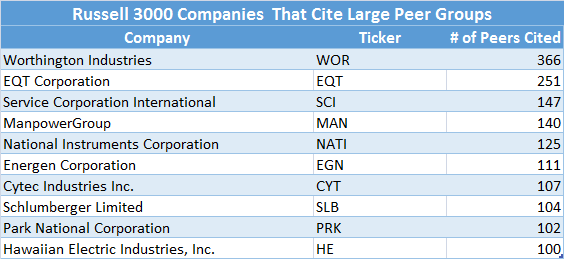January 19, 2016
Online Forum: Executive Pay Disclosure Evolves
The CFA Institute’s recent, creative online forum – “Executive Pay Disclosure in the Say-on-Pay Era” – is a convenient way for practitioners and boards to access the views of key, seasoned stakeholders in executive compensation engagement and disclosure.
In the forum, ISS’s Carol Bowie, Apache director & former Compensation Committee Chair Chip Lawrence, Covington & Burling’s Keir Gumbs, Towers Watson James Kroll, Prudential’s Peggy Foran and NIRI’s Ted Allen weigh in on a series of practical questions posed by CFA Institute Moderator, Matt Orsagh including:
- What do investors want from the CD&A section of the proxy statement?
- What are some of the most significant improvements you have seen in the CD&A over the past 5–10 years? Please highlight some best practices that investors have found helpful.
- What is the state of engagement around executive compensation between companies and investors? How has increased engagement improved the CD&A?
- Re: engagement – who should be involved in the process from a companies point of view? At what point does the compensation committee speak with investors about compensation issues?
- What process do issuers go through in creating a strong CD&A — who is involved, what is the timeline?
- For small-cap and mid-cap companies with limited resources to devote to the CD&A, what are some of the most important things to focus on?
- Is the CD&A all about “say on pay” these days or are there other substantive issues at play?
- Are there any nascent compensation issues you expect to grow in importance this proxy season or in coming years?
See Matt’s blog about the forum and the CFA Institute’s CD&A Template.
Compensation Peer Group Analytics
Audit Analytics’ recent analysis of Russell 3000 executive pay peer groups revealed these and other interesting findings:
– Notwithstanding the fact that pay benchmarking peers usually include close competitors, companies of similar size and stature, regional companies, etc., 12 of the 13 companies most frequently named as a peer by others (at least 44 times) are considered manufacturing companies according to their SIC codes, and all are mature – with more than half having been public since at least 1965.
– Ten companies listed 100 or more peers (one company listed 366 peers), whereas the typical peer group for this index consists of 17 peers:
– Some companies don’t use any outside peers or other benchmarks.
– The most frequently cited peer company, 3M Company, disclosed in its March 2015 proxy statement the following compensation peer group selection factors:
- Peer companies are monitored regularly by the same market analysts who monitor the performance of 3M (investment peers); and/or
- Peer companies have similar business and pay models, market capitalization (based on an eight-quarter rolling average), and annual revenues.
Webcast: “Proxy Drafting – Mid-Cap & Smaller Company Perspective”
Tune in tomorrow, Wednesday, January 20th for the webcast – “Proxy Drafting: Mid-Cap & Smaller Company Perspective” – to hear Gunderson Dettmer’s Richard Blake, Denbury Resources’ Sarah Wood Braley, Covington & Burling’s Keir Gumbs, KBR’s Adam Kramer and JetBlue Airways’ Eileen McCarthy provide practice pointers on what approaches to preparing the proxy for mid-cap & smaller companies work best. Please print these “Course Materials” in advance.
– by Randi Val Morrison
Blog Preferences: Subscribe, unsubscribe, or change the frequency of email notifications for this blog.
UPDATE EMAIL PREFERENCESTry Out The Full Member Experience: Not a member of TheCorporateCounsel.net? Start a free trial to explore the benefits of membership.
START MY FREE TRIAL
